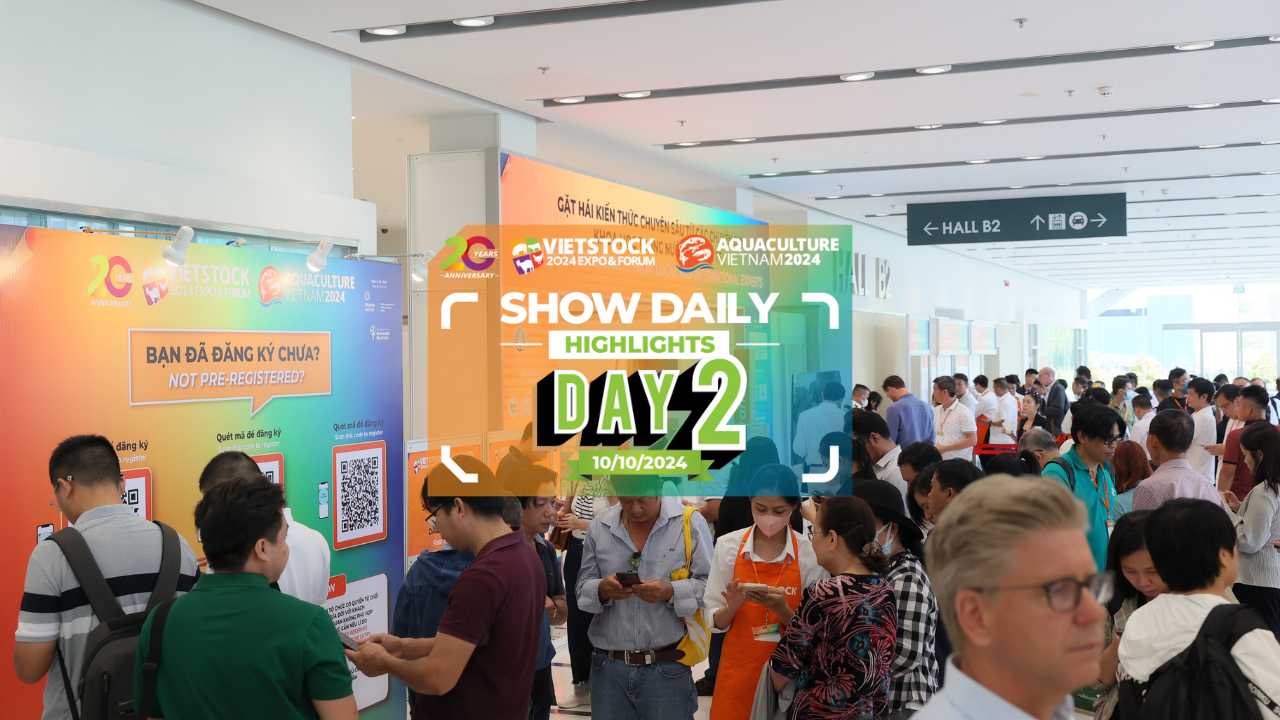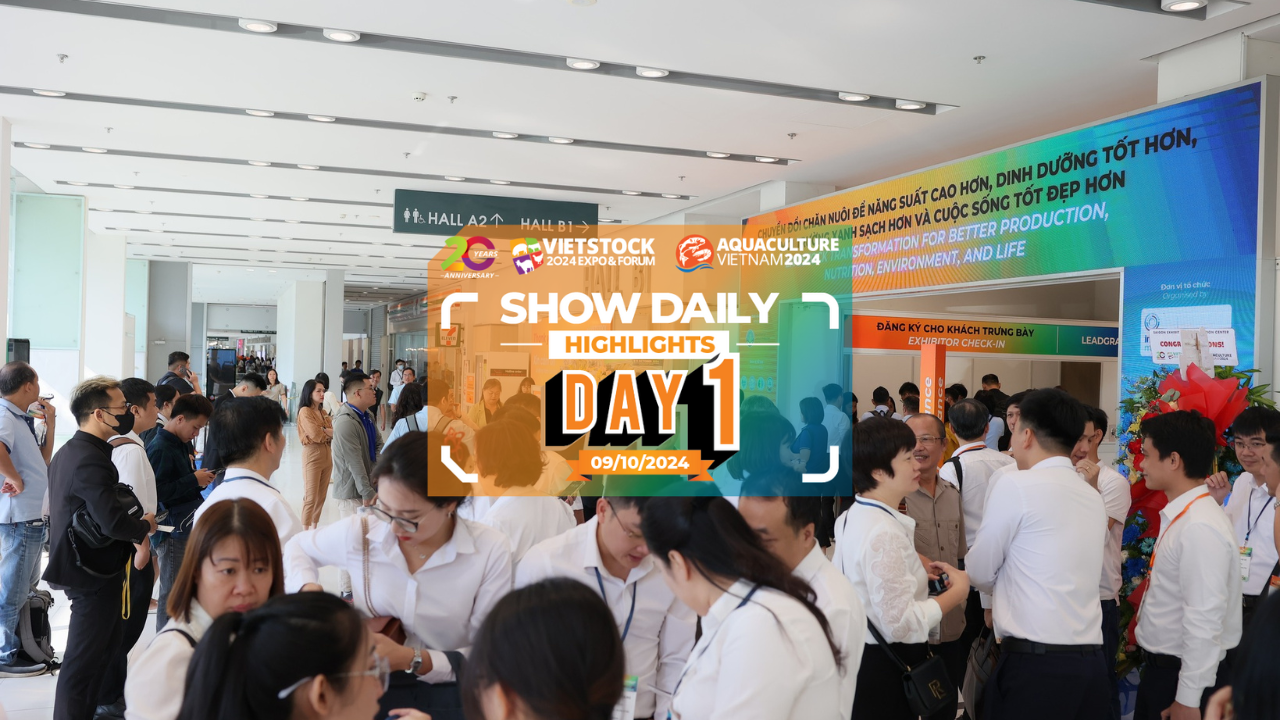EL NINO‘S HEATWAVE WANES, LA NINA’S STORM LOOMS
Having just escaped from the record-breaking heat waves caused by El Nino, Vietnam is now facing the threat of severe storms due to La Nina. What is this extreme weather phenomenon, and how will it impact Vietnam’s livestock industry? Let’s explore in this article!
Understanding El Nino and preparing for La Nina
1. El Nino
El Nino is a climate phenomenon that occurs when the sea surface temperatures in the equatorial Pacific region become abnormally warm. This phenomenon brings scorching heatwaves to Asia, including Vietnam, with prolonged periods of temperatures reaching 44°C.
According to the World Meteorological Organization, El Nino has nearly ended and transitioned to a neutral state during the period from April to June 2024. From July to September 2024, La Nina is expected to emerge with a probability of 55-65%. The transition phase from El Nino to La Nina can have devastating effects on both humans and the environment.
2. La Nina
In contrast to El Nino, La Nina is a phenomenon where the sea surface temperatures become abnormally cold. La Nina amplifies storms and snowfall in Southeast Asian countries, India, and Australia.
These extreme weather events negatively impact agricultural and industrial production and create conditions for the spread of diseases.
Multidimensional impacts of El Nino and La Nina on Vietnam’s livestock industry
1. Disruptions in livestock feed prices
El Nino causes droughts and water scarcity in key cereal-producing regions such as the United States, Argentina, and Brazil, leading to reduced yields of corn, soybeans, and wheat. The decrease in the supply of livestock feed directly contributes to higher production costs and affects farmers’ profits.
La Nina brings heavy flooding to rice fields, resulting in increased prices for feed in Asian countries. Transporting and preserving feed under wet conditions also incurs higher costs to ensure quality and prevent spoilage.
However, the La Nina phase is also expected to bring cooler and wetter weather, benefiting some Asian agricultural regions, especially after the dry spells caused by El Nino.
2. Negative environmental impacts on livestock farming
El Nino has prolonged droughts, raising average temperatures by 2°C compared to normal levels, adversely affecting animal health and causing heat stress.
La Nina in 2024 will increase the risk of disease outbreaks due to wet environmental conditions. The scarcity of clean water for aquaculture and livestock farming becomes more critical. This leads to severe consequences for aquaculture regions in the Mekong Delta, resulting in significant losses, reduced production, and compromised seafood quality.
3. Threats to animal health
During El Nino events, many regions report increased rates of livestock and poultry diseases, particularly those related to heat stress and water scarcity. Respiratory diseases in livestock, such as pneumonia, are more prevalent.
La Nina can also facilitate the spread of moisture-related diseases, including fungal infections, skin inflammations, avian flu, foot-and-mouth disease, and blue-ear disease in pigs.
These extreme weather phenomena create instability in livestock operations, exerting significant pressure on production costs and farm profits. Consequently, herd reduction and non-optimal sales become common outcomes.
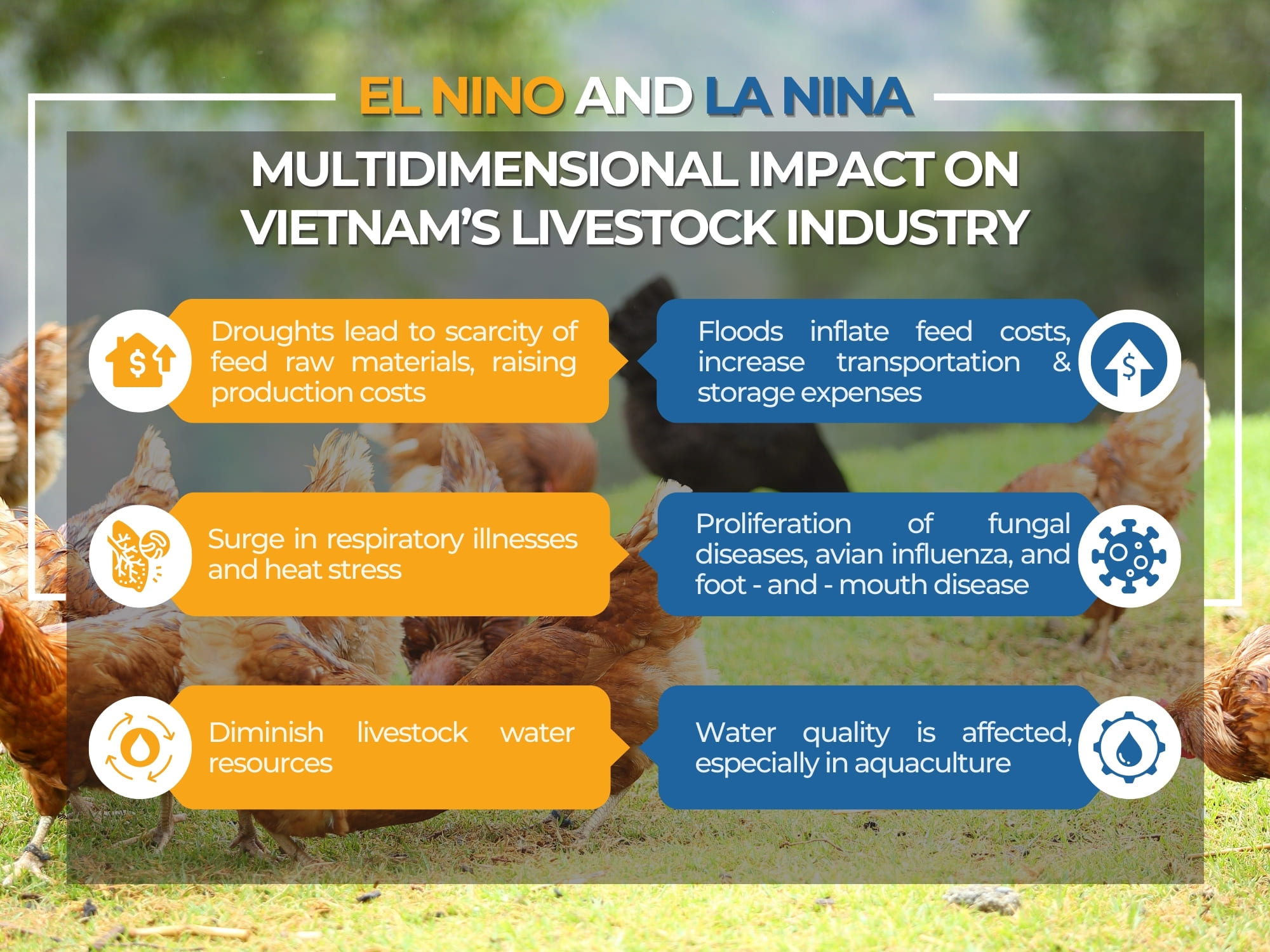
Mitigating Damage and Ensuring Stable Production in Livestock Farming
In Vietnam, unpredictable and increasingly intense abnormal weather patterns require farmers to be prepared to prevent and minimize losses.
1. Stockpiling livestock feed
To avoid sudden feed shortages, building reserves and diversifying feed sources are crucial factors. Specific planning and collaboration with the livestock community help optimize storage and resource sharing. Regular checks and updates on inventory status are essential to ensure the quantity and quality of feed.
2. Adjusting nutritional regimens changing
Temperature and environmental changes can reduce digestion efficiency, affecting animal growth and production. Therefore, farmers need to adjust nutritional regimens to maintain stable production performance.
3. Disease prevention
Vaccination, barn hygiene, and animal health monitoring are essential. Particularly, enhancing disease surveillance and control during El Nino and La Nina periods is crucial in minimizing losses.
4. Managing livestock shelters
Ensuring that shelters are appropriately designed to protect animals from weather fluctuations is essential. Regular cleaning and investment in automated cooling and ventilation systems help regulate temperature during heat waves and provide warmth during rainy seasons.
5. Enhancing water management
Efficient management and utilization of water resources are necessary. Practices such as constructing water reservoirs and implementing water-saving techniques have been widely adopted by local communities to ensure adequate water supply for livestock.
6. Implementing sustainable livestock solutions
Applying sustainable livestock methods, such as organic farming and integrating crop cultivation with animal husbandry, contributes to reducing the negative impact of climate change, minimizing waste, and enhancing resource efficiency while safeguarding the livestock industry.
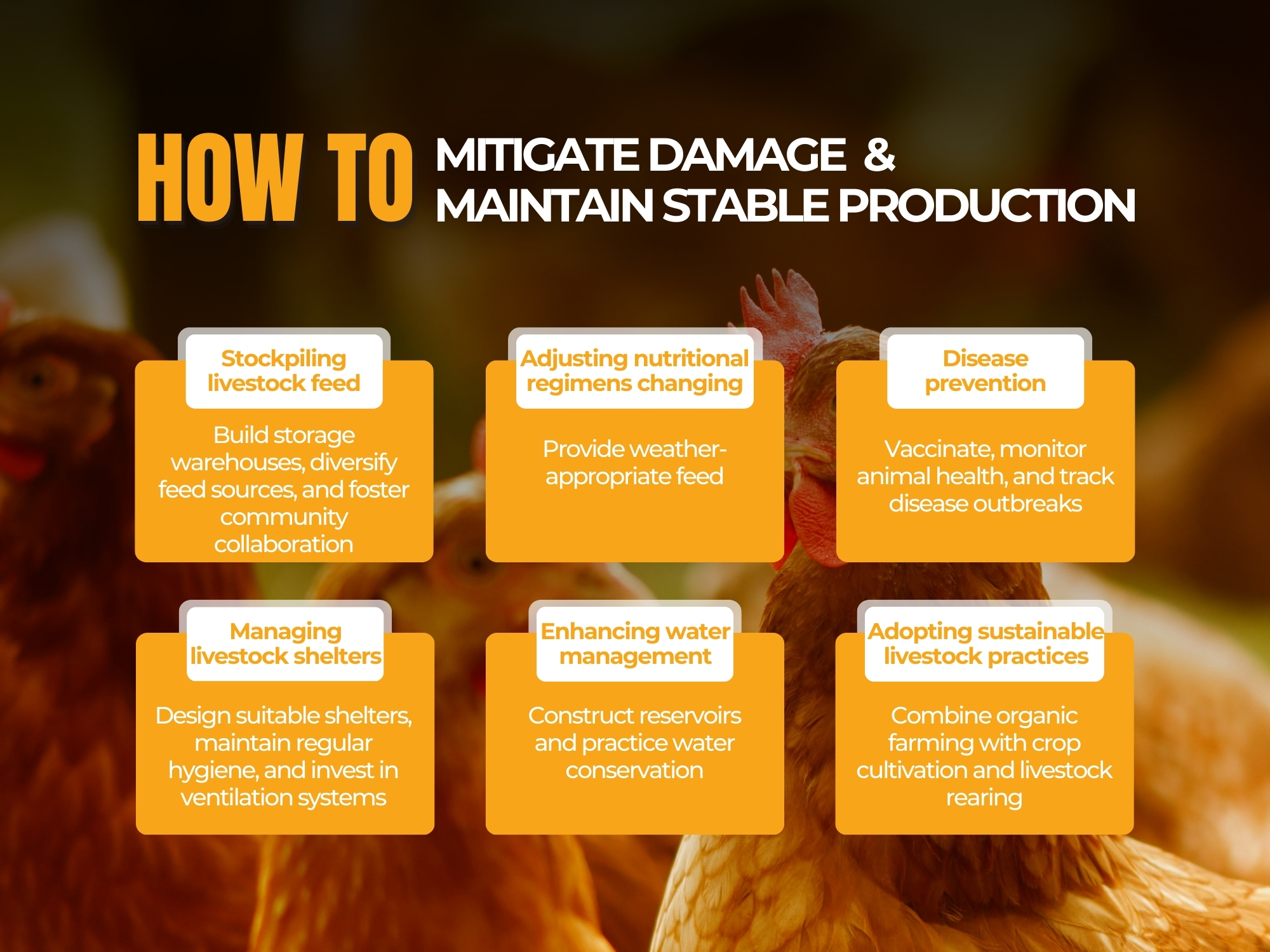
Biosecurity – Core value for sustainable development in the livestock industry
With two decades of experience, Vietstock Expo & Forum and Aquaculture Vietnam have developed an in-depth understanding of the Vietnam market and the requirements of both businesses and livestock households. Vietstock collaborates with the Department of Livestock Production, associations, and organizations related to livestock and aquaculture throughout Vietnam, bringing the latest knowledge and techniques, and helping the livestock industry overcome difficulties and strive for sustainable development.
During the 03-day show, conferences & technical seminars will be organized with diverse content, including Poultry farming; Beef & Dairy cattle farming; Renewable energy from livestock waste; Nutrition & Livestock feed; Swine farming; Animal Welfare; Greenhouse Gas Emission Control in Livestock…
Notably, the Biosecurity Asia Forum will be focused on the directions, methods, and implementation of biosecurity – a core value for sustainable development in the livestock industry. Following the success and positive feedback from the Biosecurity Asia Forum during Livestock Philippines 2024 in May, the Conferences of Biosecurity Asia Forum will continue to explore and present cutting-edge advancements in biosecurity, which is currently of great interest throughout Asia. This new highlight cannot be overlooked at Vietstock Expo and Forum 2024.
Vietstock Expo & Forum 2024 will take place from October 9 to 11 at the Saigon Exhibition and Convention Center (SECC) in HCMC, Vietnam.
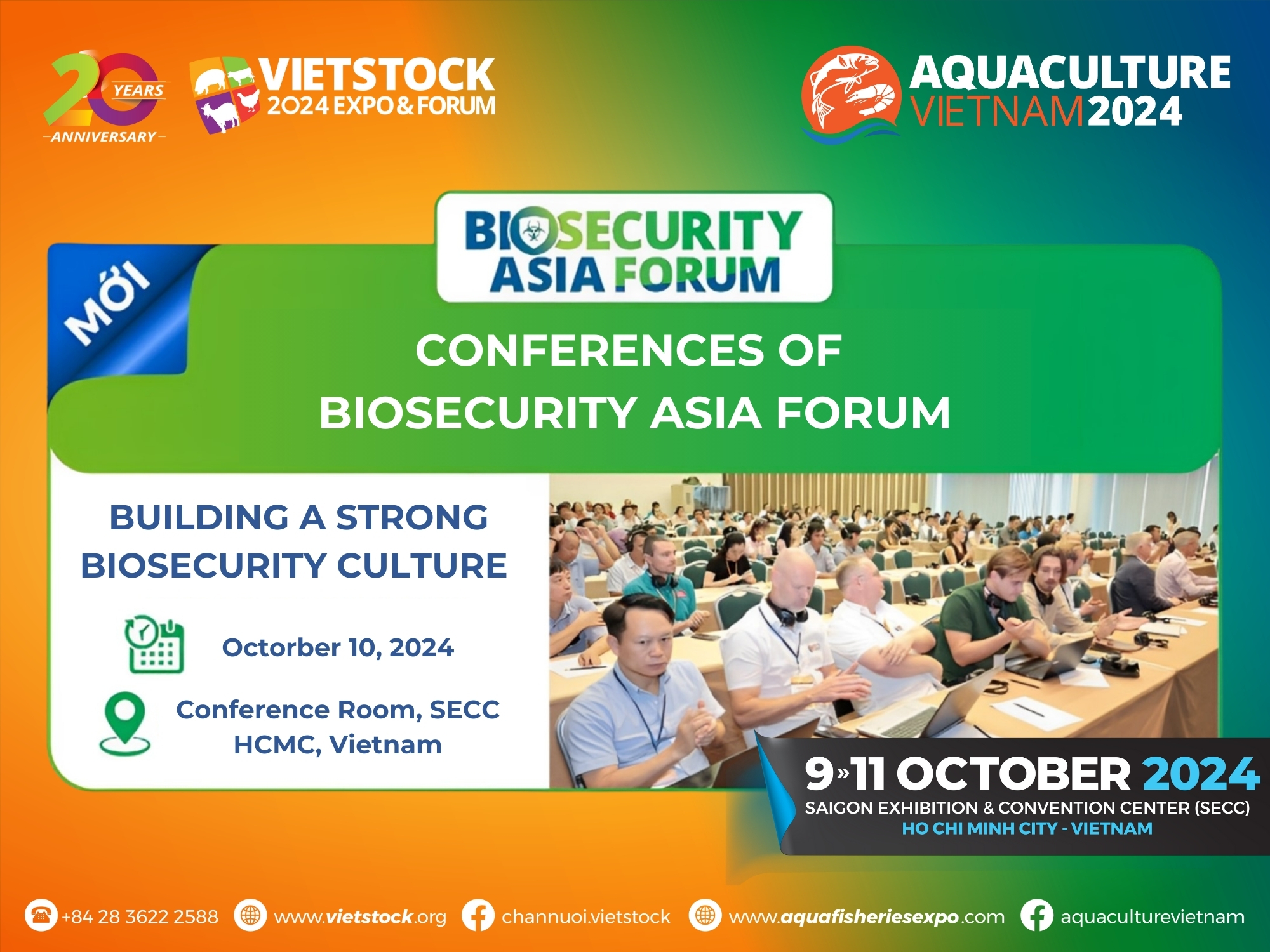
- Book a stand: https://www.vietstock.org/en/book-a-stand/
- Pre-registration: https://ers-vn.informa-info.com/vsv24
——————-
CONTACT US:
- Stand booking support: Ms. Sophie Nguyen – [email protected]
- Group Delegation Support: Ms. Phuong – [email protected]
- Marcom Support: Ms. Anita Pham – [email protected]



